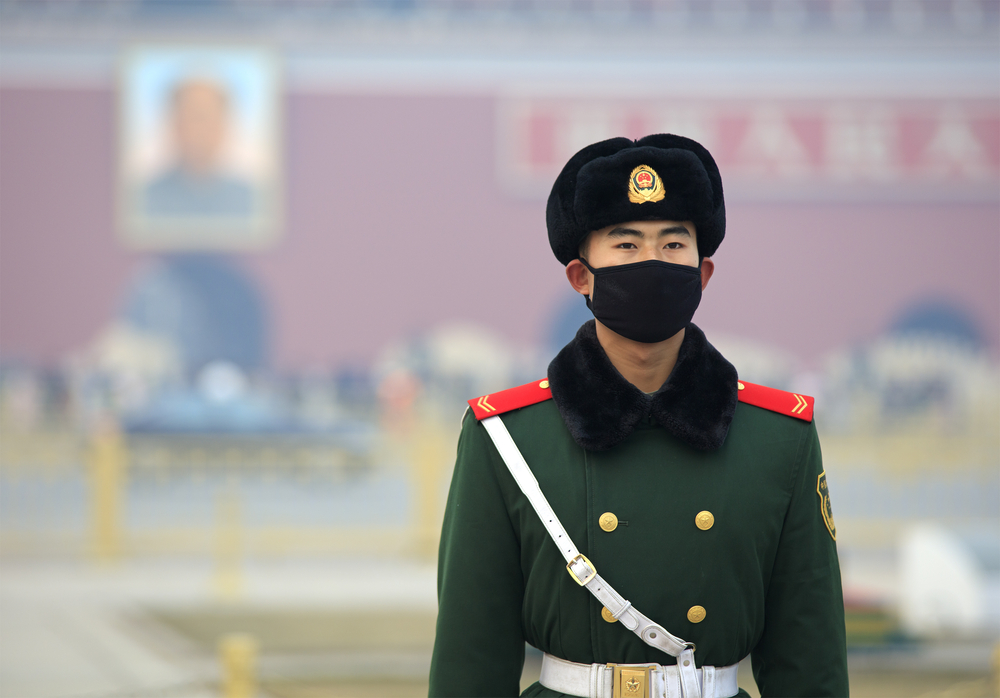As China Cuts Air Pollution, An Unseen Killer Emerges
Efforts to cut smog-causing PM 2.5 are leading to rises in ground-level ozone, a chemical harmful to health.
China’s smog-choked air is already a public health crisis, with around 1 million deaths attributable to air pollution every year, according to the World Health Organization. But as the government works to dissipate the gray haze blanketing the country’s cities, an invisible killer is rearing its ugly head: ozone. It has the country’s public health experts worried.
“China should pay more attention to ozone control,” says Zhang Junfeng, a professor of global and environmental health at the Regional Ozone Sino-US Collaborative Research Center at Duke Kunshan University, China’s first research institute for ozone pollution control, established in 2016. “Once ozone gets into the human body, it causes considerable damage to the immune system and aggravates existing cardiovascular and respiratory problems.”
Ozone is best known as the layer of gas in the earth’s atmosphere that protectshumans from harmful ultraviolet rays, exposure to which can cause cancer and other health issues. Indeed, China came under global criticism for failing to control domestic emissions of chlorofluorocarbons — or CFCs — chemicals that deplete global ozone levels and increase health risks.
Last month, scientists from Harvard University and Nanjing University of Information Science & Technology published a paper showing how China’s war on PM 2.5 has unexpectedly driven up ozone pollution. Normally, the presence of PM 2.5 in the air disrupts the chemical reactions between the free radicals that produce ozone. When PM 2.5 levels fall, these reactions become more likely, and so more ozone is produced. The negative effects on ozone pollution from drastically decreasing PM 2.5 are particularly noticeable in regions like the North China Plain, a former industrial region that has been a key target of pollution reduction in recent years.
In a January interview, one of the paper’s co-authors, Daniel Jacob, drew attention to the uniqueness of China’s ozone problem. “We haven’t observed this happening anywhere else, because no other country has moved this quickly to reduce [PM 2.5] emissions,” Jacob said. “It took China four years to do what took 30 years in the U.S.”
In their paper, Jacob and his colleagues recommended that China establish effective measures to cut ozone pollution by controlling the release of its precursors — nitrogen oxides and VOCs. But Zhang, the professor at Duke Kunshan, says cutting ozone pollution may be even more challenging than controlling particulates — partly because it’s difficult to identify the origin of ozone pollution in the first place.
“Ozone trends are different in different parts of China. Understanding which of the precursors is driving ozone formation in a city or a region is the first step toward ozone control,” Zhang says, adding that research into ozone pollution is dramatically lacking compared with research into PM 2.5. “In many regions, it’s still unclear what’s really causing ozone levels to increase,” he adds.
Without robust ozone control measures, many Chinese people will likely face greater health risks in the future. Across the country, climate change and global warming are prolonging and intensifying periods of warm weather in which ozone becomes more highly concentrated. At the same time, China’s population is growing older and more vulnerable to the adverse health effects of ozone pollution.
“If climate change continues at the current rate, ozone pollution will cause higher mortality rates in the future,” says Chen Kai, a postdoctoral fellow at the Alexander von Humboldt Foundation in Germany. Chen’s research, in collaboration with Columbia University, shows that China’s mortality rates linked to short-term ozone exposure could quadruple within 40 years, due largely to global warming and the country’s aging population.
China’s latest three-year plan to curb air pollution, released in July 2018, does make certain provisions for ozone control, such as compelling manufacturers to repair and replace VOC-emitting installations and applying legal upper limits on VOC concentration in paints, inks, and adhesives. And in the Yangtze River Delta, experts are already teaming up with government authorities to combine controlling PM 2.5 with protecting against excessive ozone by curbing industrial emissions, vehicle exhaust fumes, and coal burning.
“If China does not pay enough attention to ozone pollution now, it’ll be tough to tackle it in the future,” Zhang says.

